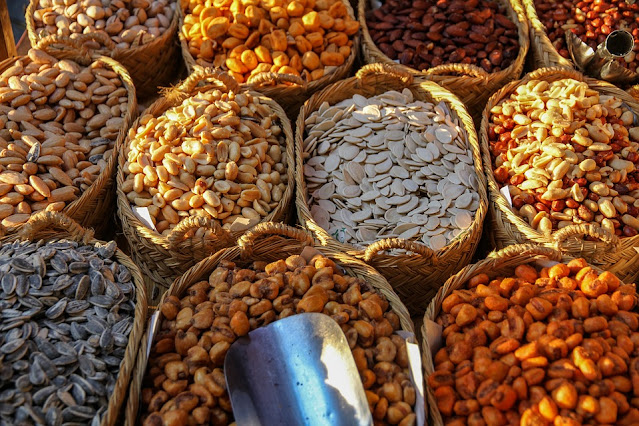Best Time to Eat Salads: An Ayurvedic Guide for Indian Diets
In today’s kale-crunching, fitness-fueled world, salads have become the poster child for clean eating. Fresh, crunchy vegetables tossed in zesty dressings seem like the perfect meal any time of the day. Ayurveda, the time-tested science of life from India, takes a deeper dive—guiding us to eat in harmony with our body’s natural clock and the inner digestive fire known as agni. According to Ayurveda, when you eat your salad is just as important as what is in it.
 |
| Image Courtesy- Pixabay |
Why Timing Matters
Ayurveda emphasizes eating in
sync with the body’s doshas (Vata, Pitta, and Kapha) and digestive
cycles. Your agni is strongest around midday (between 12 pm to 2 pm),
making this the ideal time to consume raw or lightly cooked vegetables. At this
time, your body is best equipped to break down the fibrous content of salads,
absorb nutrients, and avoid bloating or indigestion.
Also Read: Health Benefits of Coriander on Your Well Being
Ideal Time to Eat Salads
Lunch Time (12–2 PM):
According to both Ayurveda and modern nutrition, this is prime salad time—when
your gut’s ready to crunch and conquer. Your digestive fire is at its peak,
allowing your body to efficiently process raw foods, which are generally
heavier to digest. Eating salads during lunch can energize you, keep you full
without feeling sluggish, and support healthy digestion.
Avoid Salads at Dinner:
Raw salads at night can disturb digestion, especially if your Vata is
dominant. Since agni is weaker after sunset, raw foods tend to stay
undigested, leading to gas, bloating, and even disturbed sleep. If you crave a
salad at night, opt for warm, lightly sautéed veggies or soups.
Ayurvedic Tips for Including
Salads in Indian Diets
- Balance the Doshas:
- Vata: People with dominant Vata should
avoid cold, dry salads. Instead, go for warm, slightly cooked vegetables
with ghee or sesame oil, and add grounding elements like sweet potatoes
or beets.
- Pitta: Opt for cooling veggies like
cucumber, mint, and coriander. Cool things down with a splash of lime and
a sprinkle of coconut—your body’s natural fire extinguisher.
- Kapha: Use light, astringent vegetables
like cabbage, spinach, and carrots with pungent spices like ginger or
black pepper to stimulate digestion.
- Use
Indian Spices:
Adding digestive spices like roasted cumin (jeera), coriander (dhaniya), asafoetida (hing), and black salt enhances both flavor and digestion. - Choose
Seasonal Vegetables:
Ayurveda advocates for seasonal eating. For instance, in summer, cooling vegetables like cucumber and tomato are ideal, while in winter, root vegetables like carrot and beetroot work better. - Add
a Dash of Warmth:
Even in salads, incorporating warmth can help digestion. Try tempering mustard seeds in ghee and pouring it over your salad or mixing in warm moong sprouts. - Keep
it Simple:
Avoid mixing too many ingredients or adding heavy dressings. Simplicity supports digestion.
Salads are a great addition to
Indian diets, but only when eaten at the right time and in the right way.
Midday is your digestive sweet spot—make it count with a wholesome salad
enhanced by Indian spices and Ayurvedic wisdom. Avoid raw veggies at dinner,
and always aim to balance your meal with your body type and season. This small
change can help you feel more energetic, improve digestion, and keep your
eating in tune with nature.
Remember—when you eat is just as nourishing as what you eat.





I felt very happy while reading this site. This was really very informative site for me. I really liked it. This was really a cordial post. Thanks a lot!. Vanvasi Ayurveda: Ayurvedic remedies for holistic wellness.
ReplyDeleteChecking scores on Cricbet99 is always easy thanks to its clean setup. With Cricbet99 Online, everything loads fast, giving users quick access to match details. A strong platform for cricket enthusiasts who value consistent performance.
ReplyDeleteDiscover the best time to eat salads according to Ayurveda for improved digestion and overall wellness. Learn how timing, ingredients, and food combinations influence nutrient absorption in Indian diets. Understand whether salads are ideal before or after meals and how to balance raw foods with your Ayurvedic body type. Law Offices of SRIS, P.C.
ReplyDeleteLearn how timing, ingredients, and food combinations influence nutrient absorption in Indian diets. Understand whether salads are ideal before or after meals and how to balance raw foods with your Ayurvedic body type.
ReplyDeletePG Solt Casino Review